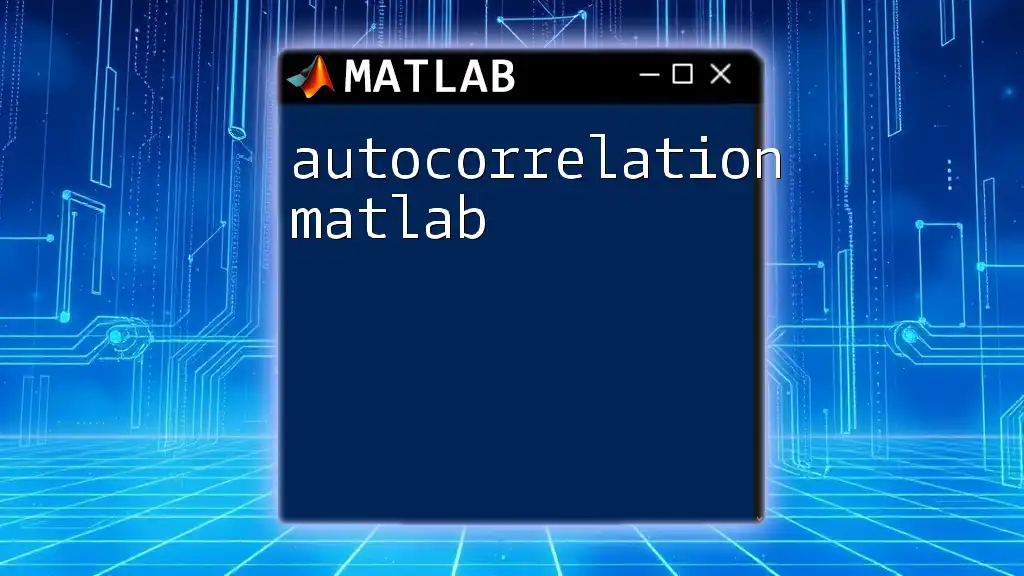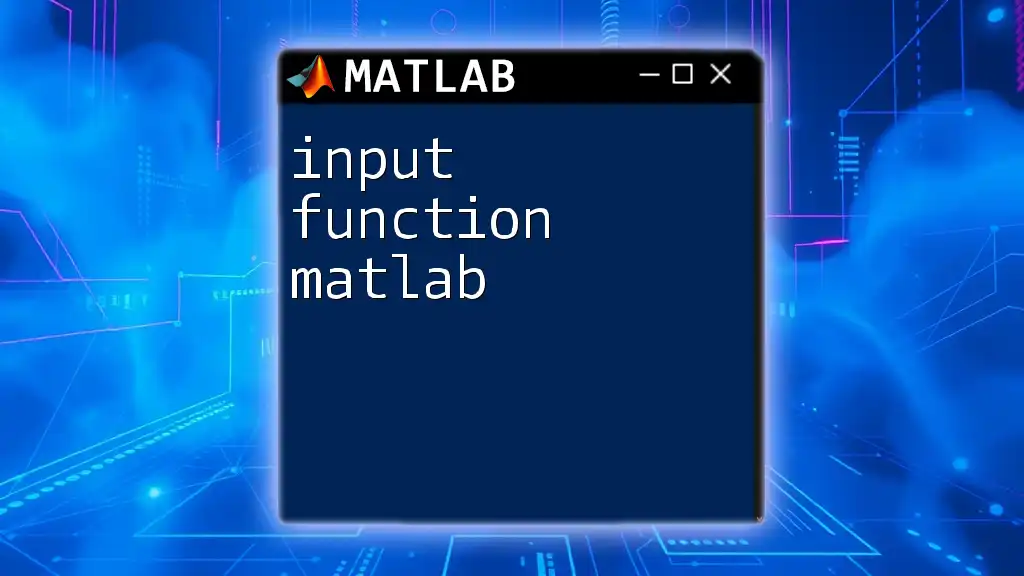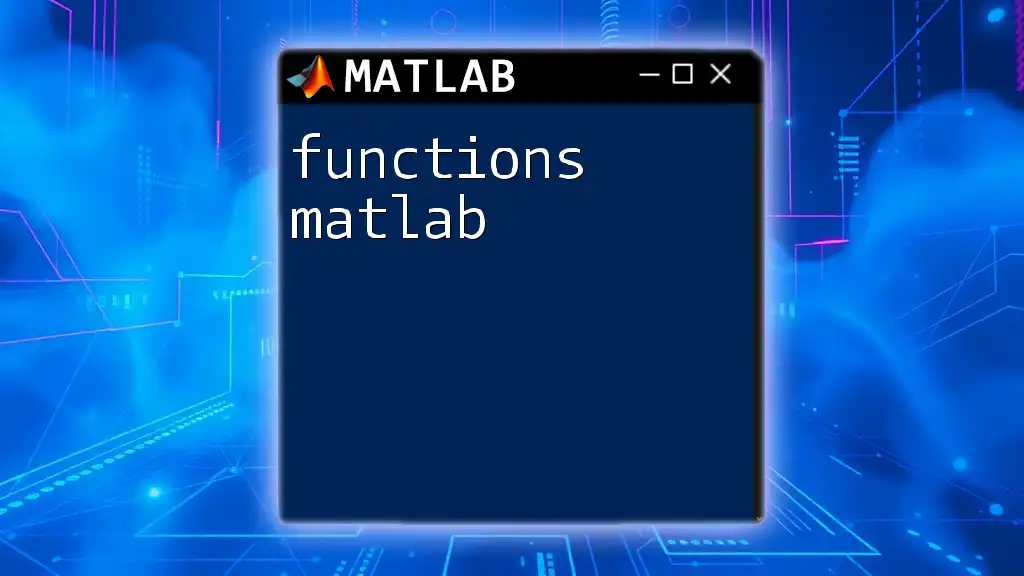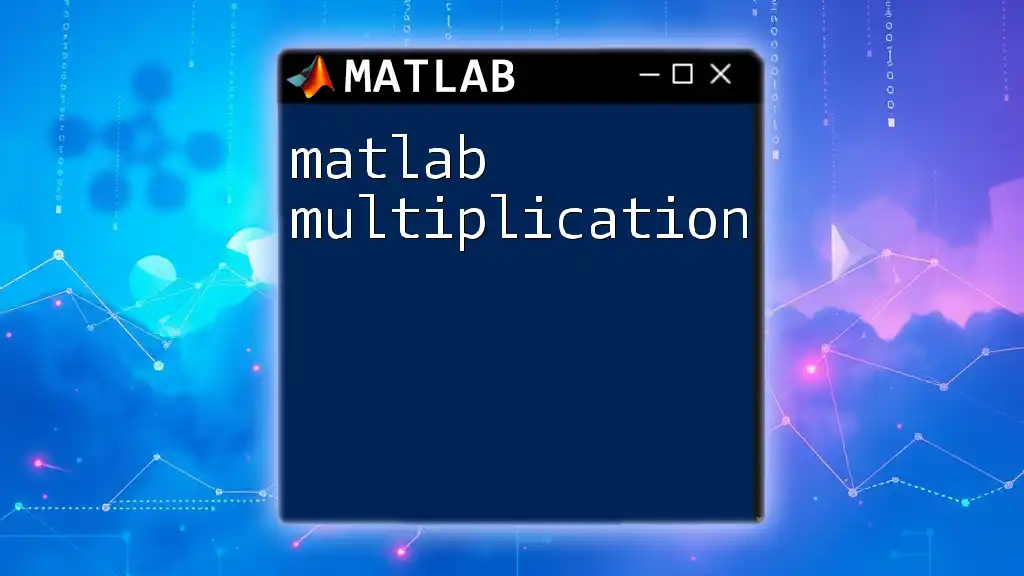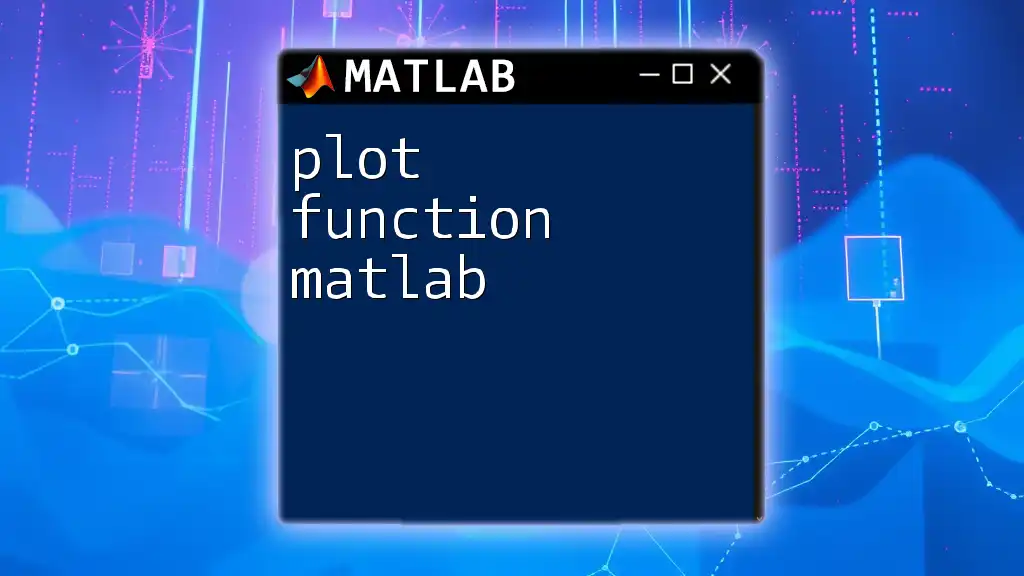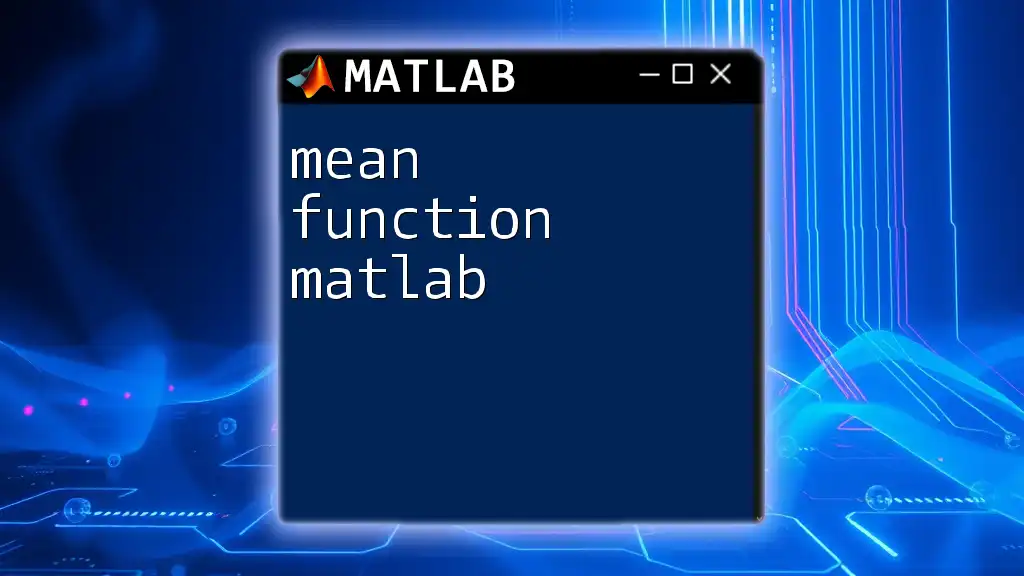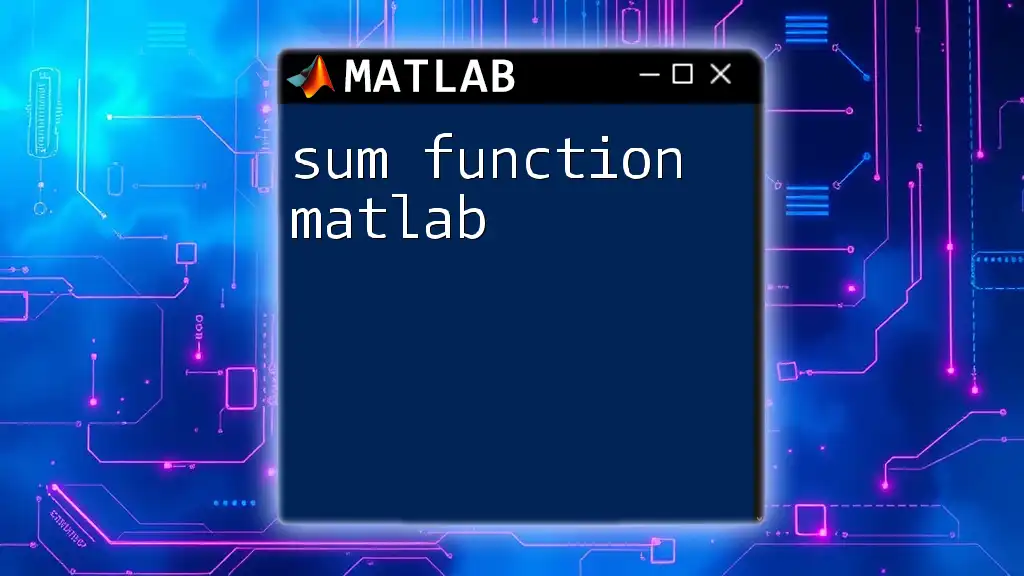In MATLAB, multiplication can be performed using the `` operator for matrix multiplication or the `.` operator for element-wise multiplication of arrays.
Here’s a code snippet demonstrating both types of multiplication:
% Matrix multiplication
A = [1, 2; 3, 4];
B = [5; 6];
C = A * B; % Resulting in a 2x1 matrix
% Element-wise multiplication
D = [1, 2, 3];
E = [4, 5, 6];
F = D .* E; % Resulting in [4, 10, 18]
Understanding Multiplication in MATLAB
What is Multiplication?
Multiplication is one of the fundamental operations in mathematics, which combines numbers or arrays to produce a product. In various applications, multiplication in MATLAB can greatly enhance the efficiency and support complex calculations, particularly in fields like data analysis, engineering simulations, and scientific research. Understanding how to properly execute multiplication commands in MATLAB is essential for anyone looking to harness the full potential of this robust computing platform.
Types of Multiplication in MATLAB
In MATLAB, there are three primary types of multiplication that users should familiarize themselves with:
- Scalar Multiplication: This involves multiplying a single number by another number (scalar).
- Matrix Multiplication: This refers to multiplying two matrices in a way that follows linear algebra rules.
- Element-wise Multiplication: This multiplication type focuses on performing operations on corresponding elements of two arrays of the same size.
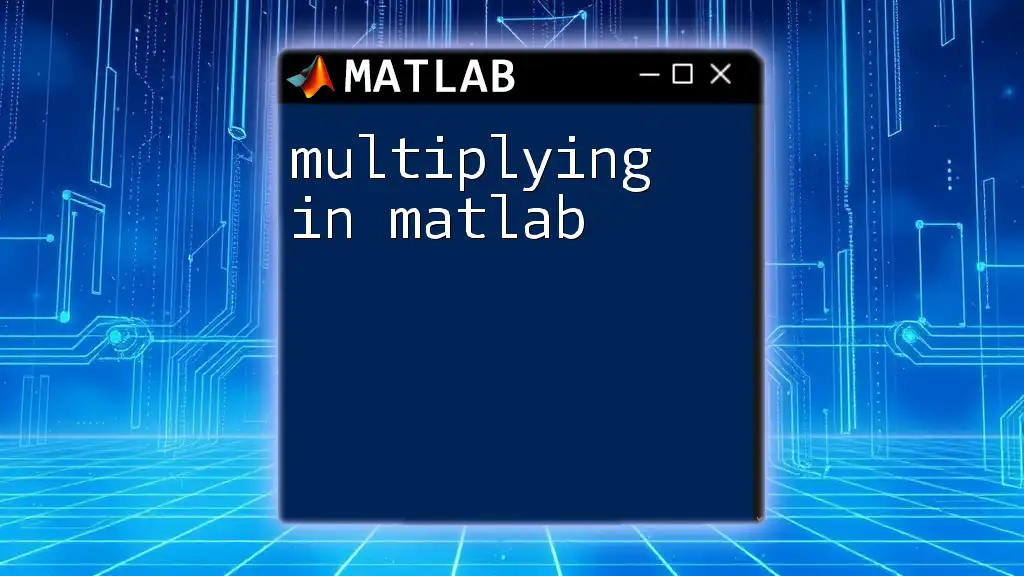
Basic Multiplication Commands
Using the Asterisk (*)
The simplest way to perform multiplication in MATLAB is by using the asterisk (*) for scalar multiplication. Consider the following example:
% Scalar Multiplication Example
a = 5;
b = 3;
result = a * b; % result will be 15
In this snippet, we define two scalar variables, `a` and `b`, and multiply them, yielding a product of 15.
Using the Dot Asterisk (.*)
For element-wise multiplication, MATLAB utilizes the dot asterisk (.*) operator. This operator allows you to multiply two matrices or arrays element by element. Here’s an example:
% Element-wise Multiplication Example
A = [1, 2; 3, 4];
B = [5, 6; 7, 8];
result = A .* B; % result will be [5, 12; 21, 32]
In this code, each corresponding element of matrices `A` and `B` is multiplied together, resulting in a new matrix.
Using the `mtimes` Function
The `mtimes` function offers an alternative method for performing matrix multiplication, especially useful when dealing with compatible matrices. Here’s how it works:
% Matrix Multiplication Example
C = [1, 2; 3, 4];
D = [5; 6];
result = mtimes(C, D); % result will be [17; 39]
In this example, we multiply a 2x2 matrix `C` with a 2x1 matrix `D`, yielding a resulting vector.
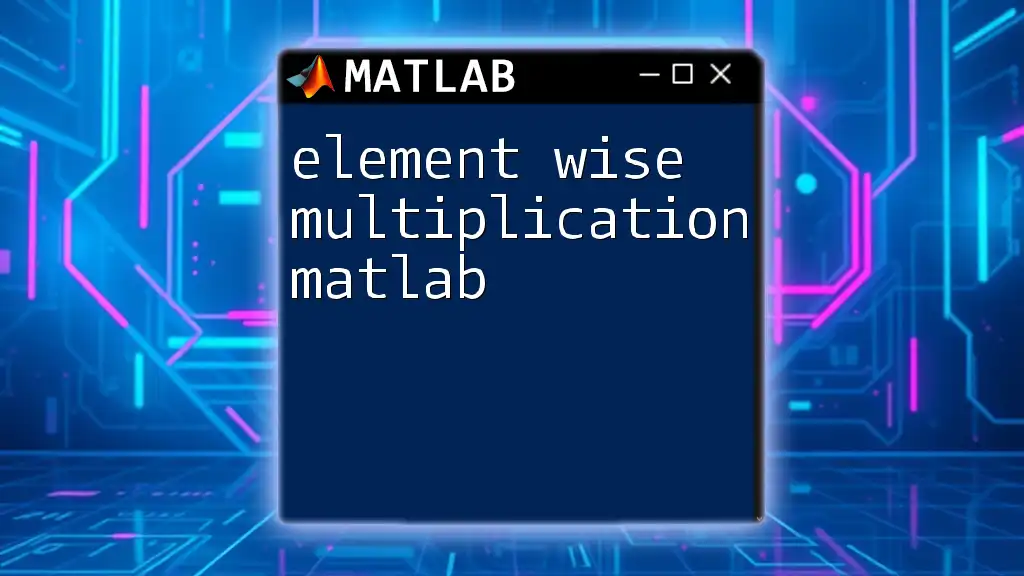
Order of Operations in Multiplication
The Role of Parentheses
In mathematics, the order of operations can significantly change the outcome of expressions. In MATLAB, parentheses are crucial for dictating the sequence in which calculations are performed. Consider the following examples:
% Order of Operations Example
a = 2;
b = 3;
c = 4;
result1 = a * b + c; % result1 will be 10
result2 = a * (b + c); % result2 will be 10
Here, both calculations yield the same result due to the positioning of parentheses; however, if additional operations were involved, the results could vary significantly.

Advanced Multiplication Techniques
Multiplicative Identity and Inverse
In multiplication, certain properties stand out. The multiplicative identity refers to multiplying by one, which retains the original number, and the multiplicative inverse refers to multiplying by its reciprocal. Here is an illustration:
% Multiplicative Identity Example
a = 10;
result = a * 1; % result will be 10
% Multiplicative Inverse Example
b = 5;
result_inverse = b * (1/b); % result_inverse will be 1
These examples emphasize essential mathematical concepts that are foundational for further calculations and optimizations in MATLAB.
Utilizing `kronecker` Multiplication
The Kronecker product is a unique multiplication operation between two matrices that yield a block matrix. It is especially useful in systems theory, signal processing, and data manipulation. Here’s how it is represented in MATLAB:
% Kronecker Product Example
A = [1, 2; 3, 4];
B = [0, 5; 6, 7];
result = kron(A, B); % Calculate Kronecker product
By executing this command, you obtain a larger matrix combining the properties of both original matrices in each block.
Multiply Matrices of Different Sizes
When multiplying matrices, it is essential to ensure they conform to multiplication rules. For instance, if matrix A is a 2x2 matrix and matrix B is incompatible for multiplication due to their sizes, it would generate an error. The following code demonstrates handling such situations:
% Non-conformable Matrices Example
A = [1, 2; 3, 4]; % 2x2 Matrix
B = [1; 2; 3]; % 3x1 Matrix
% result = A * B; % This will throw an error
B_resized = [1, 2]; % Resize B for multiplication
result = A * B_resized'; % Now it works
By resizing matrix B appropriately, it showcases how to navigate around dimensional mismatches while maintaining the integrity of your computations.
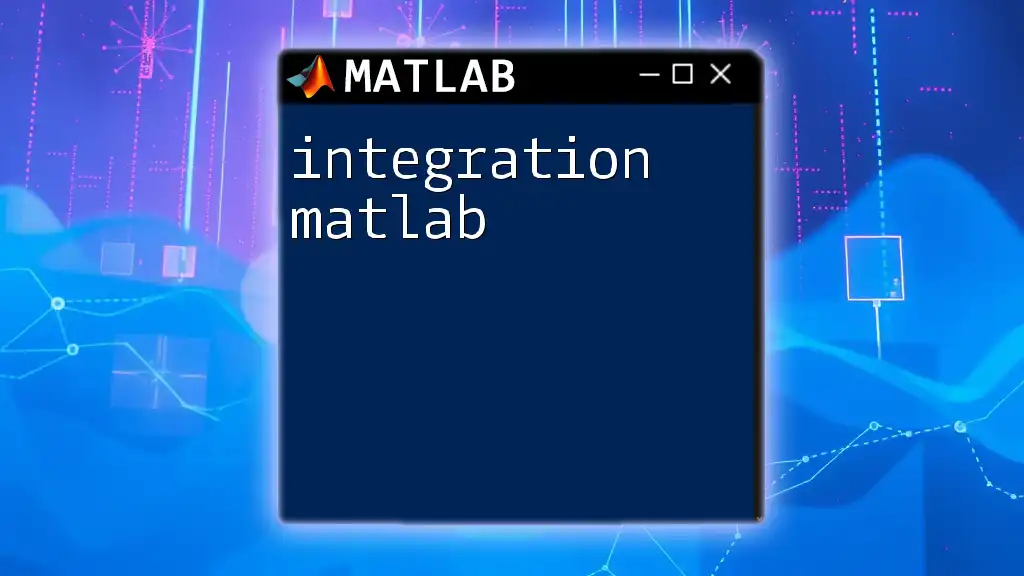
Common Errors in MATLAB Multiplication
Occasionally, users may run into issues related to multiplication in MATLAB, particularly dimension mismatches. Understanding the typical error messages can help effectively debug these problems. Common error messages include "Dimensions of matrices being concatenated are not consistent" or "Matrix dimensions must agree." Properly interpreting these messages allows you to refine your calculations and achieve desired results quickly.

Practical Applications of Multiplication in MATLAB
Engineering Simulations
In engineering, multiplication is a vital operation in the simulation of systems and control designs. For example, engineers often multiply state-space representations of physical systems to evaluate their stability and performance.
Data Analysis
In data analysis, multiplication plays a critical role, especially when processing large datasets. Analysts frequently use matrix multiplication to determine correlations between variables or transform datasets for statistical computations.
Machine Learning
Within the realm of machine learning, multiplication underpins many algorithms. From calculating predictions to optimizing loss functions, matrix operations are pivotal. The following code snippet illustrates simple matrix operations often employed in training models:
% Example of Matrix Operations in ML
X = [1, 2; 1, 3]; % Feature matrix
theta = [0.5; 0.25]; % Coefficient vector
predictions = X * theta; % Calculate predictions
In this context, multiplying the feature matrix by the parameter vector enables the calculation of predictions, illustrating the significant role multiplication plays in machine learning workflows.
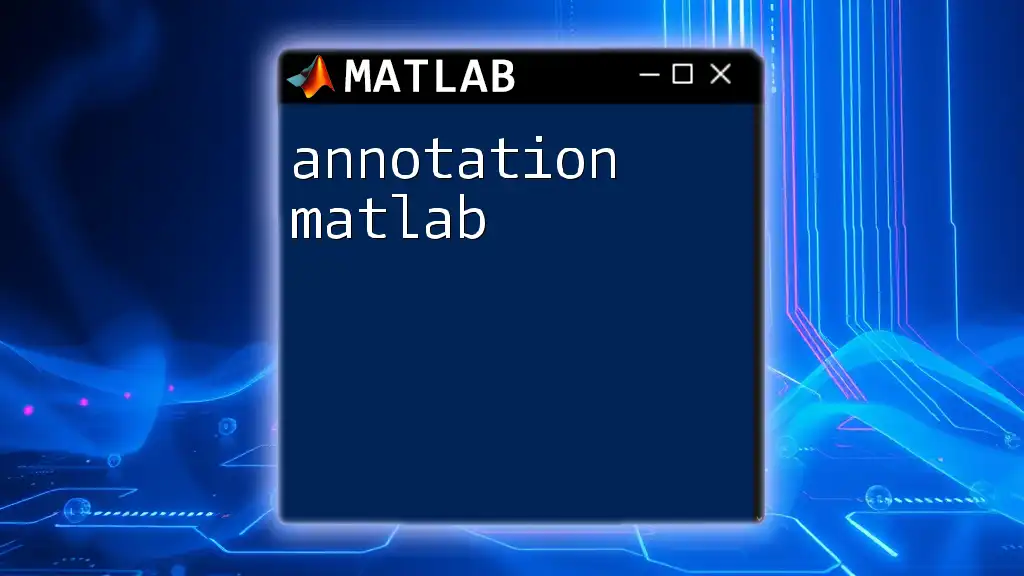
Conclusion
In conclusion, mastering multiplication in MATLAB is fundamental for anyone venturing into technical computing, data analysis, engineering, or machine learning. By understanding the various multiplication commands and their nuances, you can effectively streamline your processes and enhance your programming capabilities in MATLAB. Experimenting with these commands will further solidify your grasp of multiplication in MATLAB, enabling you to tackle more complex computational challenges.
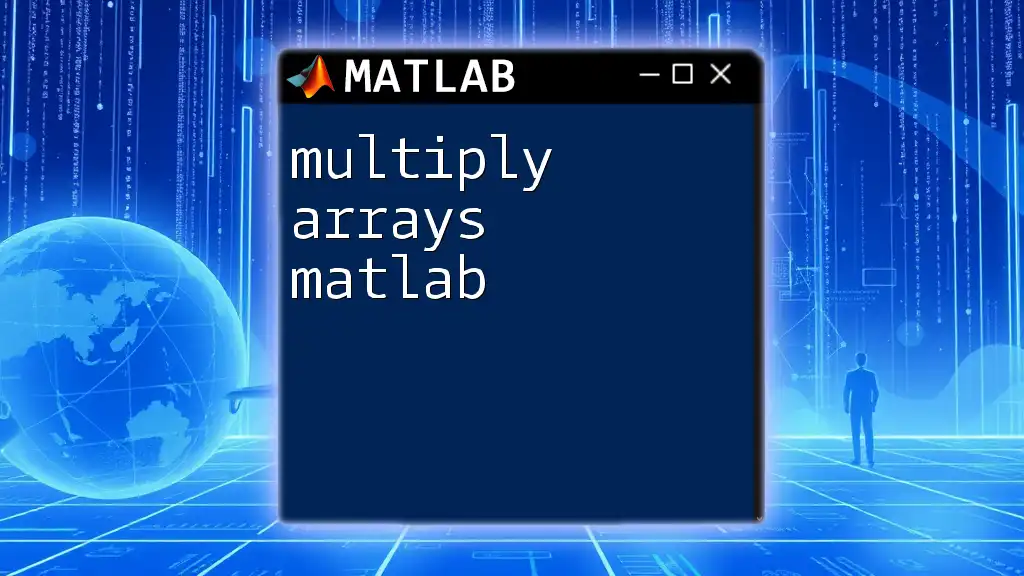
Additional Resources
To further deepen your understanding of multiplication in MATLAB, consult the official MATLAB documentation, which provides invaluable insights and advanced techniques. Additionally, there are many courses and tutorials available that focus on MATLAB programming, offering hands-on practice and refined skills to aid in your MATLAB journey.







